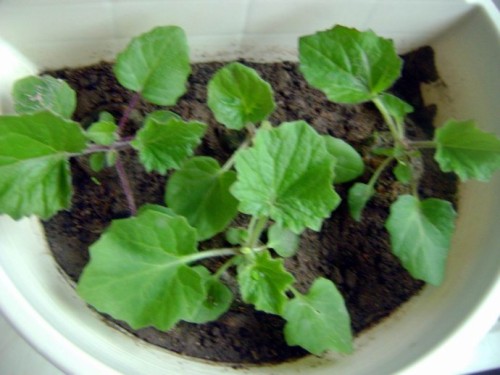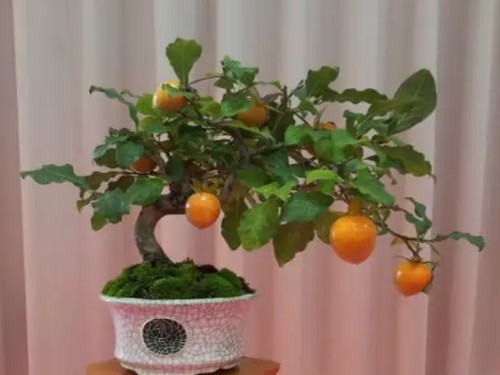Sowing and Seedling-raising techniques of potted Chrysanthemum morifolium
Flower friends who have a high degree of autonomy in planting flowers are not satisfied with buying seeds and hope to collect seeds by themselves. On a sunny day with high outdoor temperature and no wind, melon and leaf chrysanthemum should be moved to the sun for a few hours to help pollinate and improve seed setting rate with the help of warm spring breeze and insects. When you enter April, you can give a little shade when the sun is strong at noon, otherwise it will be bad for the fruit. Generally, after more than a month, the seeds can mature one after another, and the fruit should be taken as soon as the white crown hair is just exposed at the top of the fruit, so as not to scatter the seeds after the crown hair flies out. After drying, remove the impurities, pack and mark the seeds in a paper bag, and store them in a dry and ventilated place.

In addition to double-petal varieties that are not easy to bear fruit, the melon-leaf chrysanthemum that is ready to leave seeds can be sown in mid-September, replanted after emergence, and planted in a basin of 18 to 20 centimeters in mid-and late December.
Melon leaf chrysanthemum is generally sown and raised seedlings from August to September. The melon leaf chrysanthemum sex likes cool, does not bear the high temperature, should put the seedling pot under the shade, lest the temperature is too high.
1. Soaking seeds to accelerate germination
Soaking Chrysanthemum morifolium in 40 degrees warm water for 8-12 hours before sowing can produce seedlings 3-4 days earlier.
2. Sowing substrate
The common sowing substrate of Chrysanthemum morifolium is half of rotten leaf soil and half of fine sand, which is evenly mixed and sterilized with carbendazim or potassium hyperacid. it can also be sterilized in the sun.
3. Sowing method
Chrysanthemum morifolium is often raised in shallow pots, sowed by sowing method, and covered with soil to see no seeds. After sowing, the soaking pot method is used to water, and covered with glass or plastic film, put in a cool place, about 20 degrees 6-7 days can be seedling.
After the seedlings come out, the glass or plastic film can be removed and ventilated, and gradually moved to the sun to prevent the seedlings from growing too much. At the same time, control the moisture of the seedling basin soil, neither too dry nor too wet, through the spray method to cool the seedling basin, and water supply, spray wet in principle is enough.
4.Seedling and false planting
Melon leaf chrysanthemum seedlings about a month, seedlings grow 2-3 true leaves can be divided into seedlings, pour a thin liquid fertilizer, the seedlings will be pseudo-planted in a small flowerpot or nutrition bowl with a caliber of 10cm.
5. Upper pot colonization
The seedlings after pseudo-planting can be planted when 5-6 true leaves grow, or when the root system is full of pseudo-planting pots. Choose flowerpots with caliber 20cm, plastic pots or earthen pots when planting. When putting on the basin, the basin bottom should be slightly applied with long-acting base fertilizer, such as organic fertilizer or slow-release fertilizer.
After potting, the lateral buds of the basal 3-4 nodes of the melon leaf chrysanthemum should be erased at any time, so as to reduce the consumption of nutrients and avoid excessive congestion of branches and leaves, so as to concentrate more nutrients for the growth of the upper flower branches.
Watering is controlled after planting, and other aspects can blossom from late February to early March according to conventional maintenance. At this time, the temperature is already high, and there are more and more pollinated bees and butterflies, and you can choose fine plants with bright flowers, stretched leaves, short petiole, compact, strong, disease-free and pest-free plants as mother plants, and put them in a sunny and well-ventilated room. More phosphorus-based fertilizers can also be used for foliar topdressing with 2/1000 to 3/1000 potassium dihydrogen phosphate.
Time: 2019-06-10 Click:
- Prev

How to shape Laoren persimmon bonsai
Laoya persimmon looks good, easy to feed and good shape, so you can often see garden cultivation and Laoya persimmon bonsai. But Laoya persimmon really has no ornamental value except fruit. Deciduous shrubs, branches are very slender, spiny, leaves are also very common, a fallen leaf in winter, it is a pile of dead wood.
- Next

How to fertilize the small bonsai
Potted plants are cultivated in pots with limited space, limited use of soil, and limited natural nutrients. For the normal growth of potted plants, nutrient supplement is absolutely necessary, so fertilization is also a very important item in the daily management of potted plants. Generally speaking, the three elements of fertilizer refer to nitrogen, phosphorus and potassium.
Related
- Fuxing push coffee new agricultural production and marketing class: lack of small-scale processing plants
- Jujube rice field leisure farm deep ploughing Yilan for five years to create a space for organic food and play
- Nongyu Farm-A trial of organic papaya for brave women with advanced technology
- Four points for attention in the prevention and control of diseases and insect pests of edible fungi
- How to add nutrient solution to Edible Fungi
- Is there any good way to control edible fungus mites?
- Open Inoculation Technology of Edible Fungi
- Is there any clever way to use fertilizer for edible fungus in winter?
- What agents are used to kill the pathogens of edible fungi in the mushroom shed?
- Rapid drying of Edible Fungi

